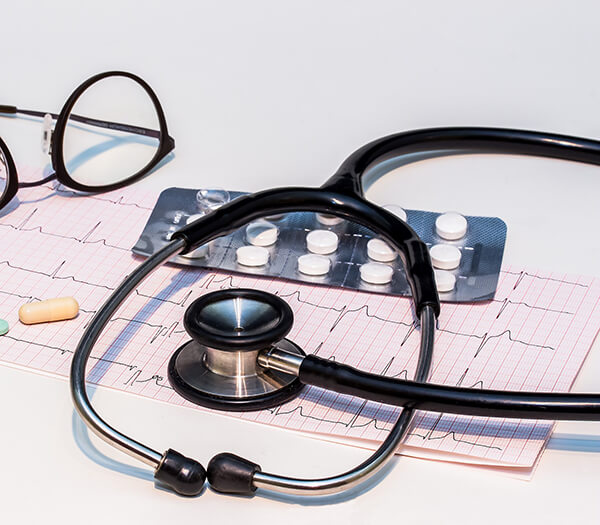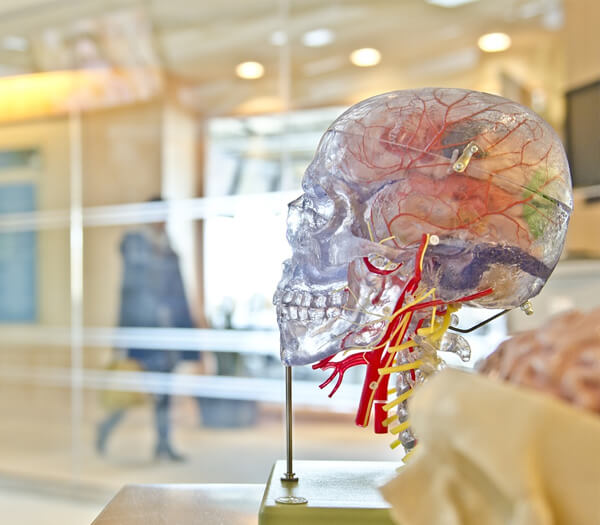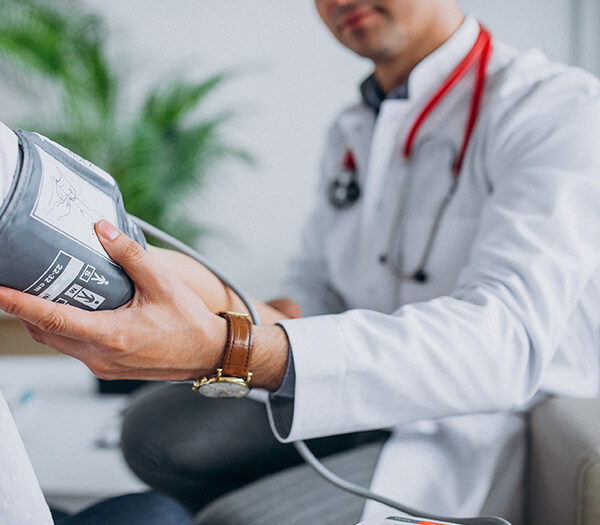Op. Dr Bülent Koç
He was born in Sarıkamış in 1975. He completed his high school education at Ankara Kurtuluş High School. He finished his medical education at Trakya University Faculty of Medicine between 1993 and 2000, earning the title of medical doctor. He completed his training in Otorhinolaryngology and Head & Neck Surgery at Şişli Etfal Training and Research Hospital, becoming a specialist in ENT and Head & Neck Surgery in 2005.
After his specialization, he worked as an ENT specialist at Mardin State Hospital. He completed his military service at Kayseri Military Hospital. Afterwards, he continued his work as an ENT specialist at Üsküdar State Hospital and Pendik State Hospital.
During his residency, he developed an interest in nasal and facial aesthetics, attending many local and international seminars and courses, and visiting doctors in this field.
He has made several educational visits to Prof. Pietro Palma, one of Europe's most famous rhinoplasty (nose surgery) doctors, and participated in his surgeries.
He has also visited Dr. Steven Dayan, a leading name in America for facial aesthetics (Facial Plastic Surgery), fillers, and Botulinum Toxin applications, and attended his surgeries. He regularly attends many local and international congresses to keep up with the latest developments in this area.
He is also a member of the European and Turkish Associations of Facial Aesthetics.
Some of the international and local educational congresses, courses, and meetings he attended are:
- Certification of The European Academy of Facial Plastic Surgery Full Membership.
- Congress of European Academy of Facial Plastic Surgery (36th) Oslo, Norway/ 2013
- Postgraduate Anatomical Surgical Training ‘Vienna Hands-on Courses’, Advanced Aesthetic Surgery of The Face Master Class Course, Hands-on Dissection Course. Vienna/ 2012
- 7th Nose & Face World Rome 2012, 7th International Federation of Facial Plastic Surgery Societies (IFFPSS) Rome, Italy/2012
- Biennial International ‘Milano Masterclass’ Aesthetic & Reconstructive Rhinoplasty. Milano, Italy/2011
- American Academy of Facial Plastic and Reconstructive Surgery, Advances in Rhinoplasty. Chicago, IL, USA
- Annual Conference in the 33rd Year of The European Academy of Facial Plastic Surgery, congress and certification 2010
- Facial Plastic Surgery Association, Cosmetic Rhinoplasty and Minimally Invasive Facial Plastic Surgery Interventions course certification 2007/ Turkey
- 4th Istanbul Masterclass symposium, Cadaver Applied Dissection course / Turkey
- 5th Rhino Camp, EAFPS Facial Plastic Surgery Course 2010/ Turkey
- 5th Rhino Camp, EAACI ENT section Allergic Course 2010 /Turkey
- Practical Approach to Vertigo-2 meeting, 2011/ Turkey
- 15th National Allergy and Clinical Immunology Congress 2007/ Turkey
- 8th Turkish Rhinology Congress /Turkey
- Otology-Neurotology Association Vertigo Seminars Meeting / Turkey
Tedaviler
TİPPLASTİ
The part we refer to as the tip of the nose is the third of our nose closest to our mouth. This area is the most important part of the nose both in terms of aesthetics and breathing. The droopiness or crookedness of the nose tip can create serious aesthetic and physiological problems (such as breathing and smelling).
Additionally, this area, with its complex anatomical and functional structure, requires significant experience and meticulous work in surgeries. The angle formed by the nose tip and the lip area is very delicate (approximately 90-100 degrees), and maintaining this angle during surgery, as well as its continuity over the years without drooping, brings aesthetic and functional success. The nose tip is formed by two thin cartilaginous structures that resemble wings (medial and lateral alar cartilages). Most patients have asymmetry issues in these two symmetrical cartilaginous structures, and to symmetrically adjust them, support grafts created from the patient's own cartilage tissues are used. These are used both as support and camouflage grafts to solve the problem. In patients with a very wide nose tip, some of the alar cartilages are removed, and suture techniques are used to make the nose tip smaller and more refined. If the nose tip is very droopy, a cartilage graft is placed as support to lift the tip, and since this cartilage tissue does not dissolve over time, there is no decrease in the height of the nose tip, and the tip does not droop. If your nose tip is too long, it is shortened by removing some of the excess cartilage and refined for an aesthetic appearance.

RİNOPLASTİ
Rhinoplasty is a surgical procedure aimed at changing the shape of the nose. Because our nose is located in the middle of our face, its curvatures and irregularities are the most noticeable features. Problems related to the nose vary greatly from person to person and are usually specific to the individual and their facial structure. Therefore, due to each nasal structure and facial structure being different, rhinoplasty (nose aesthetics) surgery should be designed and performed specifically for the individual and their face.
The intervention and technique to be used in rhinoplasty are applied specifically to you, depending on the problem with your nose. Generally, there are two techniques known as open (making an incision of about 1 cm near the tip of the nose) and closed (without making an incision on the outside of the nose). While these techniques have advantages over each other, the important thing is the method your doctor will recommend to best solve the problem with your nose.

SEPTOPLASTİ
Viewing visual deformities in the nose merely as an aesthetic issue is a significant misconception. When we think of the nose, the first functions that come to mind are breathing and smelling. The nose exists for these functions; it's a meaningful and highly complex system. It is also a unique organ located in the center of the face, crucial for the face's aesthetic appeal and identity. Anatomically, it consists of bone and cartilage structures.
Its external and internal structures function as a whole. When we breathe through our nose, the air is humidified, cleaned, gains heat in the sinuses, and gains a certain flow and circulation through the nasal conchae, regulated at the speed and conditions desired by the lungs. The air taken in reaches our bronchi more effectively and is utilized more efficiently. Breathing through the mouth does indeed allow more air intake, but the speed, humidity, and cleanliness are insufficient. As a result, less and lower-quality air reaches our lungs. Issues like curvature, hump structure, drooping of the nose tip, and narrowness in the nose often arise alongside problems with the internal anatomical structures.

SEPTORİNOPLASTİ
With septorhinoplasty surgery, you can breathe easily through your nose, which is primarily designed for breathing, and you also achieve a natural nose structure that suits your face aesthetically. Normally, we include the septoplasty surgery, which we apply to correct bone and cartilage curvatures inside the nose, in the same session for our patients who have aesthetic issues with their noses and are planning rhinoplasty. Thus, aesthetic problems are corrected in the same session as breathing problems, ensuring you can breathe easily after the surgery. Correcting breathing problems also relieves related issues such as sleeping with an open mouth, snoring, sleep disorders, sinusitis, allergies, and headaches.
With rhinoplasty, you can change everything about your nose from top to bottom. If there is a nasal hump, it can be removed. If it's wide, it can be narrowed; if narrow, it can be widened. If long, it can be shortened, or if short, it can be lengthened. If the tip of your nose is drooping, it can be lifted in harmony with your face. However, making these changes used to be challenging during surgery due to the need for millimetric precision with current techniques and instruments, and our patients' morale was greatly affected by the swollen, bruised nose after surgery, extending the recovery period. Innovations in rhinoplasty technology are being introduced into our lives. One of them is 'Piezo Rhinoplasty.' The edema and bruising seen after rhinoplasty are becoming a thing of the past. Nowadays, nasal bones are still being cut using a hammer and chisel, but this new method puts an end to all that. 'Piezo Rhinoplasty' not only achieves more successful results but also increases patient comfort. This method, which minimizes under-eye bruises and swelling, is seen as the future of rhinoplasty.

PIEZO
'Piezo Rhinoplasty' is the latest technological advancement in nose aesthetics that works with sound waves, allowing for shaping the nasal bone without breaking it, and avoiding damage to the blood vessels and nerves in the nose. This technique brings us closer to the expected aesthetic outcome in rhinoplasty. In fact, this technology has been applied in medicine for about 20 years and has recently begun to be used safely in rhinoplasty as well.
With septorhinoplasty surgery, you can breathe easily through your nose, which is primarily designed for breathing, and also achieve a natural nose structure that suits your face aesthetically. Normally, we include the septoplasty surgery, which we apply to correct bone and cartilage curvatures inside the nose, in the same session for our patients who have aesthetic issues with their noses and are planning rhinoplasty. Thus, aesthetic problems are corrected in the same session as breathing problems, ensuring you can breathe easily after the surgery. Correcting breathing problems also relieves related issues such as sleeping with an open mouth, snoring, sleep disorders, sinusitis, allergies, and headaches.

Contact
Address:
Caddebostan Mah. Çamfıstığı Sok. 1/A Blok Daire No:4 Kadıköy, İstanbul
Call:
+90 216 565 98 98
